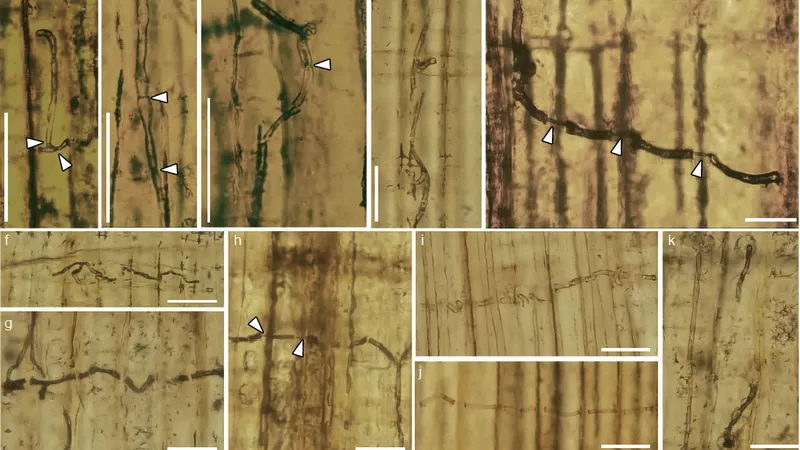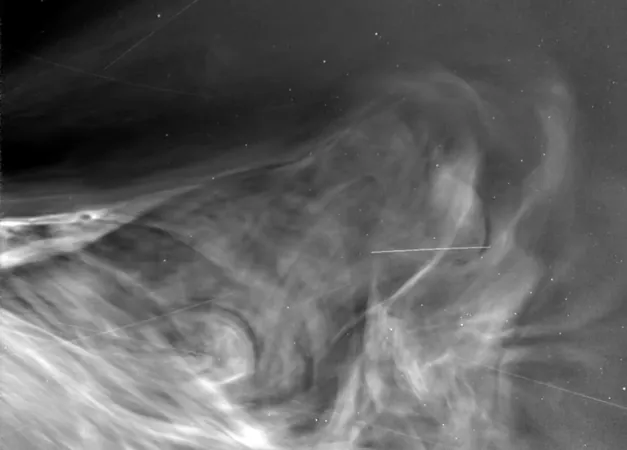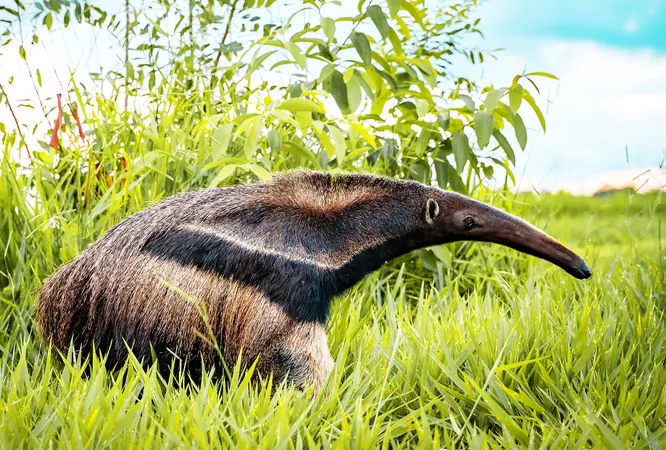
160 Million Years Ago: A Fungus That Punched Through Trees Like a Microscopic Spear
2025-06-08
Author: Wei Ling
A Remarkable Discovery in Fosil Fungi
Imagine a time when fungi not only thrived but also wielded the power to pierce through ancient trees—introducing the bizarre world of blue-stain fungi! New research reveals astonishing evidence that these fungi, believed to have emerged as far back as the Late Paleozoic, were not just figments of the past but rather formidable organisms dating back an impressive 160 million years.
In a groundbreaking find, a team of Chinese researchers led by Dr. Ning Tian and Dr. Yongdong Wang stumbled upon remarkably well-preserved fossil fungal hyphae embedded in Jurassic petrified wood in northeastern China. This discovery marks a pivotal moment in paleontology, pushing the known existence of blue-stain fungi back by an incredible 80 million years, and offering us a rare glimpse into the ancient ecosystems they inhabited.
Fungi That Act Like Microscopic Spears
What makes this discovery even more fascinating is the unique structure observed in the fossil—the 'penetration peg.' This specialized feature allows the hyphae to effectively breach the formidable cell walls of wood. Unlike wood-decay fungi that decompose wood through enzymatic processes, blue-stain fungi rely on their specialized hyphae to mechanically pierce through, much like using a microscopic spear. Dr. Tian notes that these dark-hued, pigmented hyphae indicate a lineage closely related to today’s blue-stain fungi.
A Paradigm Shift in Fungal Evolution
This remarkable fossil discovery isn’t just an academic curiosity; it radically alters our understanding of fungal evolution and ecology. According to Dr. Wang, the implications are significant—not only does it provide crucial evidence for the early evolution of blue-stain fungi, but it also sheds light on their ecological relationships with ancient plants and insects during the Jurassic period.
Interestingly, while modern blue-stain fungi rely on bark beetles from the subfamily Scolytinae for spore dispersal, fossil evidence suggests that these beetles do not appear until the Early Cretaceous. Hence, it’s believed that other wood-colonizing insects were responsible for dispersing the ancient spores, showcasing a diverse and intricate ecosystem.
Implications for Understanding Fungal History
As we peel back layers of ancient history, this extraordinary find reminds us of the complex interactions between life forms that have existed long before us. It not only enhances our appreciation for fungal organisms but also enriches our knowledge of the interconnectedness of ecosystems throughout Earth's history.







 Brasil (PT)
Brasil (PT)
 Canada (EN)
Canada (EN)
 Chile (ES)
Chile (ES)
 Česko (CS)
Česko (CS)
 대한민국 (KO)
대한민국 (KO)
 España (ES)
España (ES)
 France (FR)
France (FR)
 Hong Kong (EN)
Hong Kong (EN)
 Italia (IT)
Italia (IT)
 日本 (JA)
日本 (JA)
 Magyarország (HU)
Magyarország (HU)
 Norge (NO)
Norge (NO)
 Polska (PL)
Polska (PL)
 Schweiz (DE)
Schweiz (DE)
 Singapore (EN)
Singapore (EN)
 Sverige (SV)
Sverige (SV)
 Suomi (FI)
Suomi (FI)
 Türkiye (TR)
Türkiye (TR)
 الإمارات العربية المتحدة (AR)
الإمارات العربية المتحدة (AR)